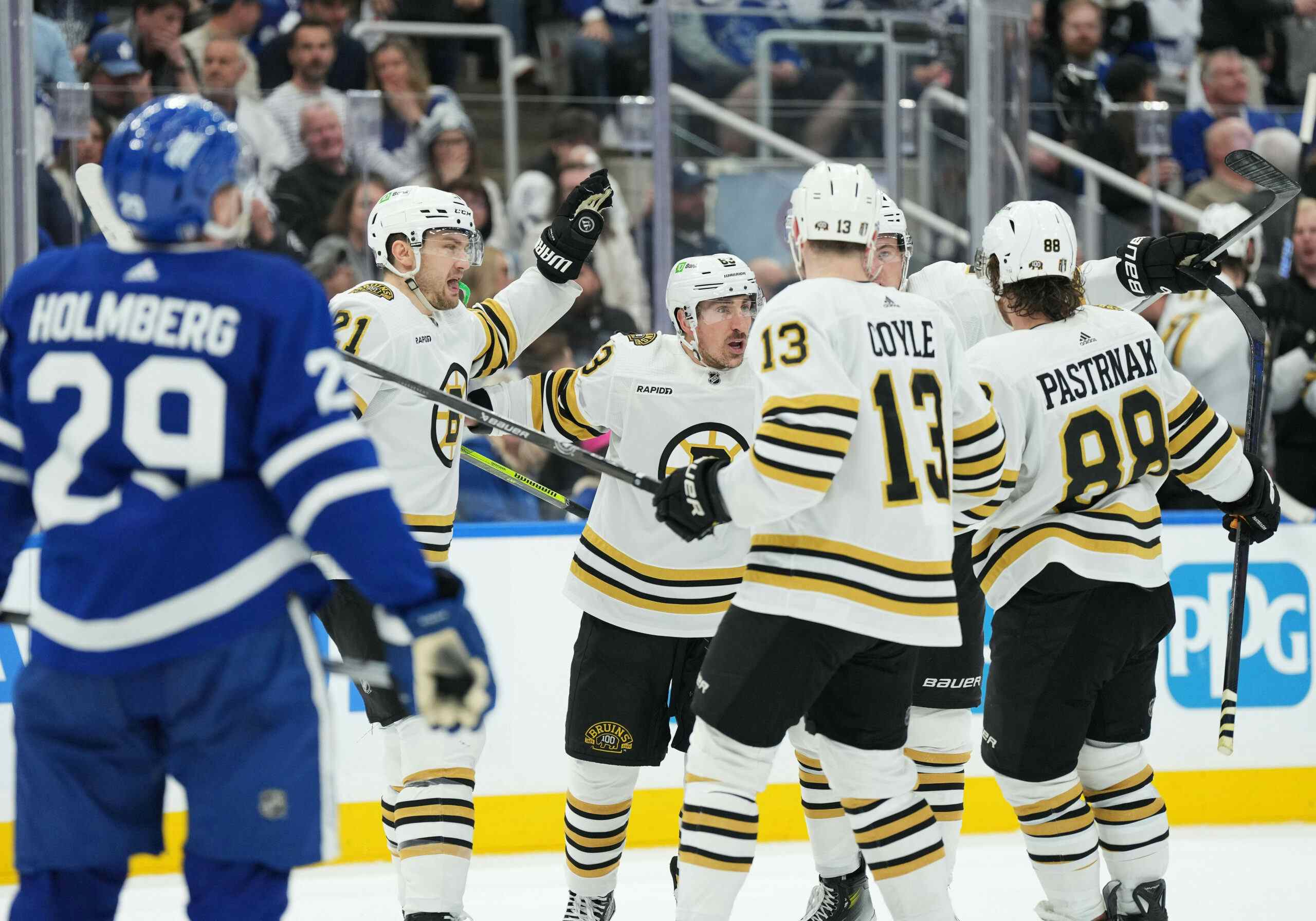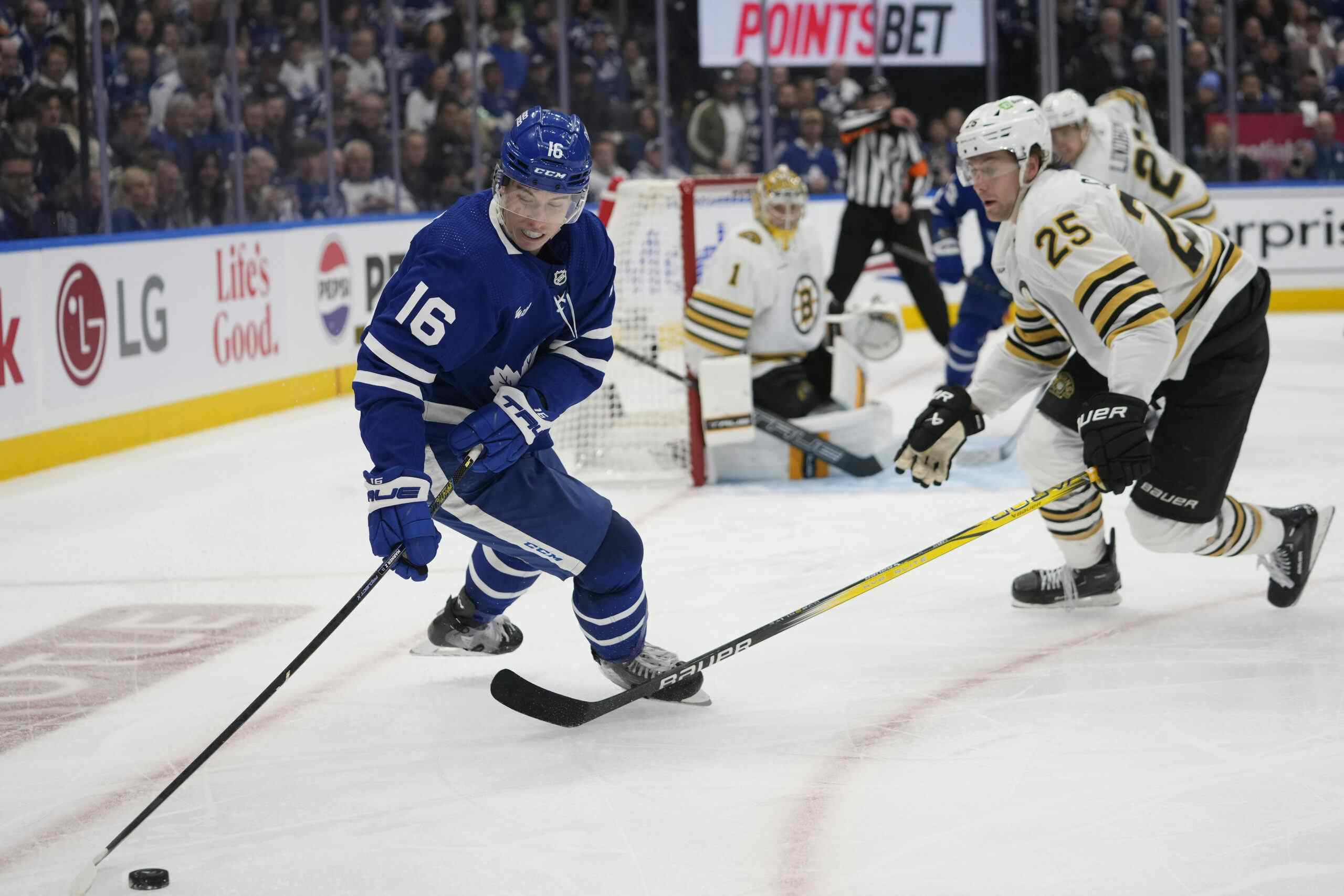For Petter or Worse
I woke up this morning to see my Twitter timeline collectively arguing. This wasn’t particularly startling; after all, such arguments have become a tradition on Hockey Twitter, particularly if, heaven forbid, a member of the blogosphere disagrees with somebody who works for a media outlet.
Today, the topic was Petter Granberg.
Granberg has begun to draw the attention of increasingly keen eyes since being called up to the Toronto Maple Leafs. He wasn’t necessarily the first choice; Korbinian Holzer had already made his way up, and Stuart Percy is recovering from a concussion he suffered in late December. With this considered, the twenty two year old Swede has played four games with the Leafs this season, in addition to his cameo in last year’s season finale.
Opinions have formed on him over time, and the debate now rages regarding his upside. I’d like to make a couple of points about some of the topics at hand.
Modern Hockey and the Stay-at-Home D-Man
I thought that @SkinnyPPPhish brought up a very good point this morning, when he mentioned that one of the biggest breakthroughs that the analytics movement has accomplished has been the “debunking” of the value of stay at home defencemen. I definitely agree with him on this one.
The thing is, and I don’t believe a lot of people realize this, play styles that “the numbers” label as ineffective, whether is a type of player, a breakout, or anything in between, were bad before the numbers as well. The numbers are merely providing evidence for the hypothesis; they don’t make the actual impact themselves (though teams may adjust with said knowledge, creating indirect impact and new results).
I’ve long considered the idea of a stay at home defenceman to be peculiar, only really finding use for them if I felt like body checking somebody in an EA Sports video game. Just think about the role of that player; their job is to shut down the opposition by breakup up plays, body checking them, and getting in the way. That’s it. Being a “stay at home” defenceman, by description, means you’re not contributing to the offensive flow of the game, and that you’re there as the last resort if the other team has overwhelmed the rest of your teammates. All of the plays you’re notable for involve you not initially having the puck, and quite often, still not ending up with it.
On the contrary, somebody who is more offensively inclined is more likely to keep the puck on the other side of the ice, and revert the team back to attack mode faster. They may not hit you as hard, but the best way to ensure that you don’t mess up in the defensive zone is to not require being there. It’s addition by subtraction; hell, addition by addition if that player’s decisions lead to a goal.
I’ve always felt this to be common sense, and when numbers came around to back the theory for many of the league’s elite puck movers and “defensively inept” defencemen, I wasn’t entirely shocked. “Get pucks towards the net and good things will happen” and “win games by scoring more goals than the other team” are such common tropes in Hockey lore that it baffles me to this day that we continue to fight over the methods used to quantify them.
Eyeballs, Statistics, and the AHL
How does this apply to Granberg, though? Well, Granberg is your prototypical stay at home defenceman. Not incredibly mobile, but big, imposing, able to hit, and overly cautious about ever joining the rush.
There are still a few who see these as good qualities, and in theory, a lot of them are. Contrary to the belief of many, having size and “grit” aren’t negatives, and there are a lot of awesome players that would become more awesome if you added those elements to them. The issue is when they’re the defining, or worse, only qualities you have.
Granberg is still pretty young, but at this time, he projects to fall under that line. Granberg is yet to be on the ice for a goal for or against in his NHL career, but the team is only taking about 38.4% (-14.6 relative) of the attempted shots with him on the ice. In the fifty minutes he’s played at even strength to date, he’s only attempted to take three shots; just one of those hitting the net. There’s no real sign that he’s going to be able to contribute offensively, and eventually, the piles of pucks going past him will start going in.
Sure, it’s a small sample; that’s a point that was brought up by those in his defence today. But the issue is, it really isn’t.
If you thought the National Hockey League’s provided statistics were lacking, you should see the American Hockey League’s. You have games played, goals, assists, shots on goal, penalty minutes, and plus minus. That’s it. No “real-time” statistics. No time on ice. Super, super bare bones. It’s what makes evaluation in the league so reliant on scouting, and eyeballs.
I’m not huge on the “eyeball test”. It’s pretty anecdotal, allows room for fabrication without definitive retort, and unless you’re isolating your eyes on a particular player for the whole game, is probably clouded by white noise anyway. But in this league, it makes up the bulk of things.
Which is what makes the “judging off of five games” statement a little more valid in some arguments. Not a lot of people, particularly those in the media with a focus on the NHL, get time to watch the leagues below. Contrary to what was suggested by Eric Prime in this morning’s argument, there isn’t a “microscope” on guys on the Marlies. There’s a handful of people who see even a quarter of their games in a given year that aren’t employees of the Toronto Maple Leafs organization or random season ticket holders. There’s valid reasoning for that, but it’s the reality of the situation.
I’ve seen almost all of Granberg’s home games in person and watched most of the road games online. The same traits that we’ve seen out of him in five NHL games carry over to his 117 in the AHL. However, he’s been put in situations that boost his perceived value. Linemates are an obvious one; his even strength time in the past year and change involved him usually playing with John-Michael Liles or Stuart Percy. Liles is an above average NHLer who had a bad contract, and Percy has shown NHL readiness and looked good in the bulk of his games with the Leafs thus far.
His time without Percy since Liles’ departure has mostly been on the penalty kill, which limits the need for offensive upside. Getting in the way and dumping the puck is effective enough, and that’s what his bread and butter is. The game is largely played at even strength, however, and that doesn’t help him much there.
Something we can look at, and I did with his NHL numbers, is how often he shoots the puck. This was actually a point that fellow TLN writer Shawn Reis brought up in one of his “next top blogger” submissions – Granberg basically never shoots the puck, which in the AHL, is the best quantifiable evidence that he’s not really driving play. In those 117 games, he’s taken 64 shots on goal.
Looking at former Leafs defencemen since the 2005 lockout, it’s practically impossible to find someone who shot less frequently than that. Luke Schenn shot more. Mike Komisarek, Hal Gill, Jeff Finger, Andy Wozniewski, Mark Fraser, and Keith Aulie all shot more frequently. Your best comparable is somebody like Jonas Frogren, a fellow Swede with the same qualities, who was proven to be, well, bad.
What To Make of It All?
I don’t think its time to completely write off Petter Granberg just yet (he is a 22 year old North American Sophomore after all), but there’s more than five games to work with here. He’s had the benefit of playing with some very good talent in the AHL that masked his deficiencies in driving play.
It’s up to him to figure out his next step. If he wants to seriously contribute in the National Hockey League, he’s going to have to develop an offensive side to his game. His style of hockey has never really worked in the most typical of situations, and it’s become more apparent than ever in recent years, and teams are starting to adapt to the new knowledge. Unless he changes something up, his current “max-out” is the type of guy that you sign on a 1 year, 1 million dollar contract in August, and the Leafs don’t need go “all in” on the development of guys like that. Thankfully, it doesn’t seem like they’re doing that with Granberg; they’re keeping the hype minimal, supporting him where they can, and letting his growth play out.
If he can grow his game, he could greatly exceed what was expected of him on his draft day. If he doesn’t, whatever, he’s a fourth round pick can probably find a home in the SHL if things don’t work here.
In the mean time, there’s no rush. The Leafs don’t have many other lineup options at the moment, and god only knows that winning isn’t a necessity right now.
Recent articles from Jeff Veillette





